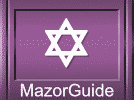|
Egalitarian Ketubot
Sample of Reform Ketubah Text
Interfaith Ketubah
The Traditional Aramaic ketubah text is the only text accepted by the
Traditional Orthodox Ashkenazic Jewish community. The text was conceived
approximately 2,000 years ago, with the primary purpose of protecting the
finances of a Jewish wife.
The ketubah stipulates wifes right to support, clothing and sexual satisfaction. A husbands obligation to pay for his wifes medical and burial costs were included as well. A general statement in the
ketubah. The ketubah further assured a woman would leave a marriage with the dowry she brought to it, and the interest it earned.
A ketubah handed from a husband to the wife is symbolic of the covenant Moses wrote as the Jewish people accepted God at Mount Sinai.
Traditional ketubah texts fell into disfavor as the modern age dawned
because the ketubah set men as masters of the marriage. More egalitarian
texts have been written, where the couple pledges support to each other.
Egalitarian Ketubot
Couples pledge to
uphold these bonds of love, honor and support to each other in egalitarian
versions. In addition, both the bride and groom envelop their beloved with the
holiness of marriage with the words You are consecrated unto me according to
the traditions of Moses and Israel.
Idealistic words of love follow. We also pledge to establish a home open to the
spiritual potential in all life. Another version continues We pledge to be
sensitive at all times to each others needs, to attain mutual intellectual,
emotional, physical and spiritual fulfillment.
Some couple put their hearts on paper and write their own ketubah or add
loving addenda to the standard text. Common law marriage is recognized in
Judaism, so what a couple includes or leaves out of a ketubah will not
change the validity of their marriage.
Sample of
Reform Ketubah Text (Short Version)
The Reform ketubah text is written in Modern
Hebrew and English. There are several versions of wording to this style, so you
may find that different artists may use different wordings in their ketubot
designs. In most cases, the English text is a translation of the Hebrew.

On the ___day of the week, the___day of the month
of___in the year___corresponding to the ___day of____in the year___here in____
The Groom ___son of___and___promised the Bride___"You are my wife according to
the tradition of Moses and Israel.
Interfaith
Ketubah
Texts for interfaith ketubot are
available. Often the text speaks of the couple as equal partners
in the marriage, and thier pledge to live a life that reflects Torah values
and respects their distinct heritages. Cherishing each other as
friends and lovers in the spirit of the traditions of Moses and
Israel ends off the ketubah.


|







